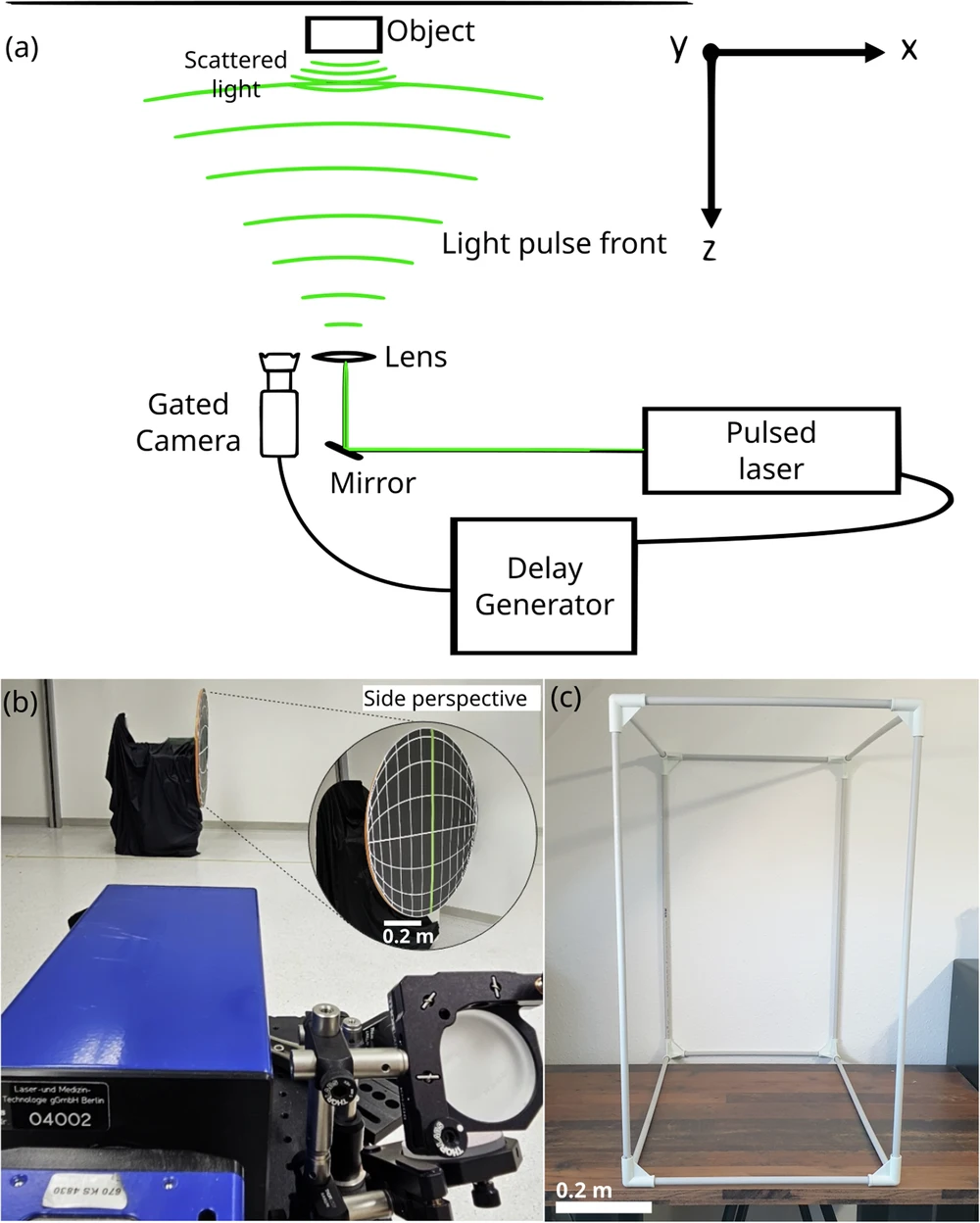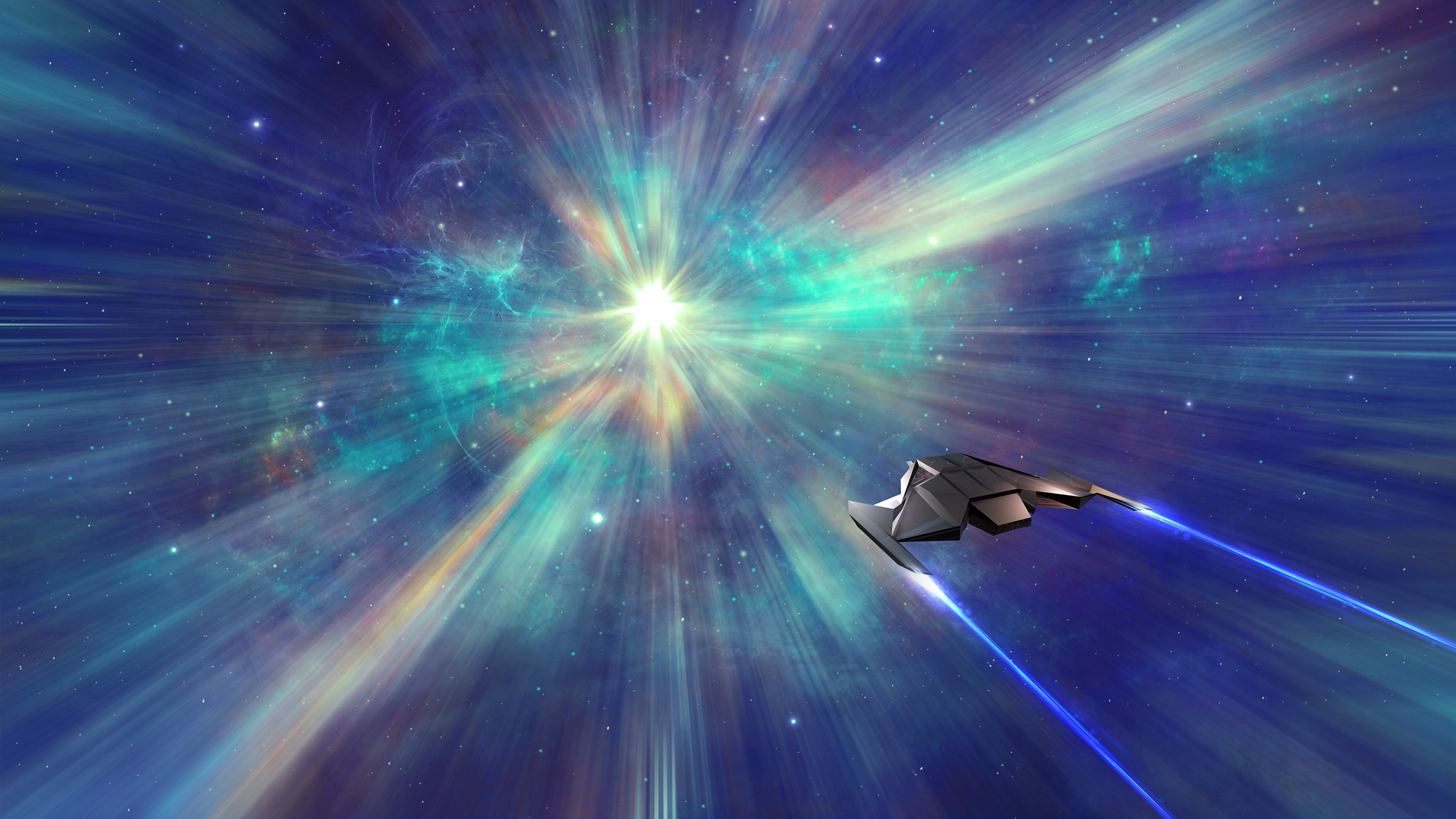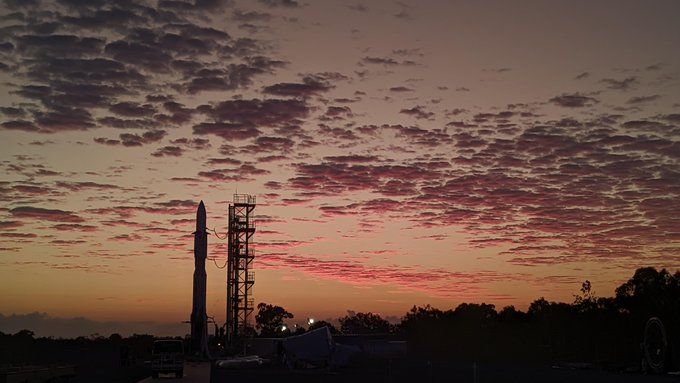In a bizarre repercussion of Albert Einstein's Special Theory of Relativity, objects traveling close to the speed of light appear flipped over.
The Special Theory of Relativity, or special relativity for short, describes what happens to objects traveling at close to the speed of light. In particular, it discusses two major repercussions of moving so quickly. One is that time would clearly appear to pass more slowly for the object traveling close to the speed of light relative to slower moving bodies around it. This is rooted in a phenomenon called "time dilation," which also leads to the famous Twin Paradox, has been proven experimentally and is even considered when building certain kinds of technology. Global positioning survey (GPS) satellites in orbit, for instance, have to account for time dilation when providing accurate navigation data.
Another consequence is what we call length contraction. "Suppose a rocket whizzes past us at 90% of the speed of light," Peter Schattschneider, a professor of physics at TU Wien, the Vienna University of Technology, said in a statement. "For us, it no longer has the same length as before it took off, but is 2.3 times shorter."
This doesn't mean the rocket literally contracts, but rather that it appears contracted to an observer. Astronauts on board the rocket, for example, would still measure their spacecraft to be the same length that it has always been. It's all relative — hence the name of the theory.
One consequence of length contraction was proposed in 1959 by physicists James Terrell and Roger Penrose. Known as the Terrell–Penrose effect, it predicted that objects moving at a high fraction of the speed of light should appear rotated.
"If you wanted to take a picture of the rocket as it flew past, you would have to take into account that the light from different points took different lengths of time to reach the camera," said Schattschneider.
For example, Schattschneider describes trying to take an image of a cube-shaped spacecraft — perhaps a Borg cube! — moving obliquely past us at almost the speed of light. First, we need to state the obvious, which is that light emitted (or reflected) from a corner on the closest side of the cube to us travels a shorter distance than light from the corner of the farthest side of the cube. Two photons departing at the same time from each of those two corners would therefore reach us at slightly different times, because one photon has to travel farther than the other. What this means is in a still image, in which the captured photons have all arrived at a camera lens at the same time, the photon from the far corner must have departed earlier than the one from the near corner in order to arrive synchronously.
So far, so logical. However, this cube is not stationary — it's moving extremely fast and covers a lot of ground very quickly.
Thus, in our hypothetical still image of this speeding cube, the far corner photon was emitted earlier than the near corner photon as expected — except when the cube was in a different position. And, because the cube is moving at nearly the speed of light, that position was very different indeed.
"This makes it look to us as if the cube had been rotated," said Schattschneider. By the time these two photons reach us, the corner on the far side looks like it is at the near corner, and vice versa.
However, this effect had not been observed before; accelerating anything other than particles to near the speed of light requires too much energy. However, a team of researchers from TU Wien and the University of Vienna, including Schattschneider, have found a way to simulate the conditions required to rotate the image of a relativistic object.

Students Dominik Hornoff and Victoria Helm of TU Wien performed an experiment in which they were able to manufacture a scenario where they could pretend the speed of light was just 6.56 feet (2 meters) per second. This had the effect of slowing the whole process down so they could capture it on a high-speed camera.
"We moved a cube and a sphere around the lab and used the high-speed camera to record the laser flashes reflected from different points on these objects at different times," said Hornoff and Helm in a joint statement. "If you get the timing right, you can create a situation that produces the same results as if the speed of light were no more than two meters per second."
The cube and the sphere were deformed to mimic length contraction — the cube, simulated to be moving at 80% of the speed of light, was actually a cuboid with an aspect ratio of 0.6, while the sphere was flattened into a disk in accordance with a velocity of 99.9% of the speed of light.

Hornoff and Helm illuminated the cube and the sphere respectively with extremely short pulses from a laser; they also recorded images of the reflected light with camera exposures of just a trillionth of a second (a span of time known as a picosecond). After each image, the cube and the sphere were repositioned as though they were moving at close to the speed of light. The images were then combined to include only those where each object is illuminated by the laser at the moment when light would have been emitted if the speed of light were only two meters per second, rather than the 983,571,056 feet (299,792,458 meters) per second that it actually is.
"We combined the still images into short video clips of the ultra-fast objects. The result was exactly what we expected," said Schattschneider. "A cube appears twisted, a sphere remains a sphere but the north pole is in a different place."
The Terrell–Penrose effect is just another example of how nature, when pushed to extremes, becomes topsy-turvy, creating phenomena quite alien to our existence.
The findings were presented on May 5 in the journal Communications Physics.









 English (US) ·
English (US) ·